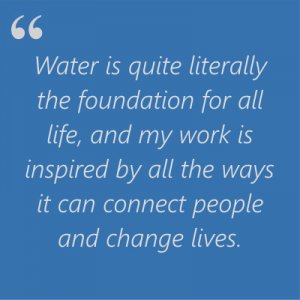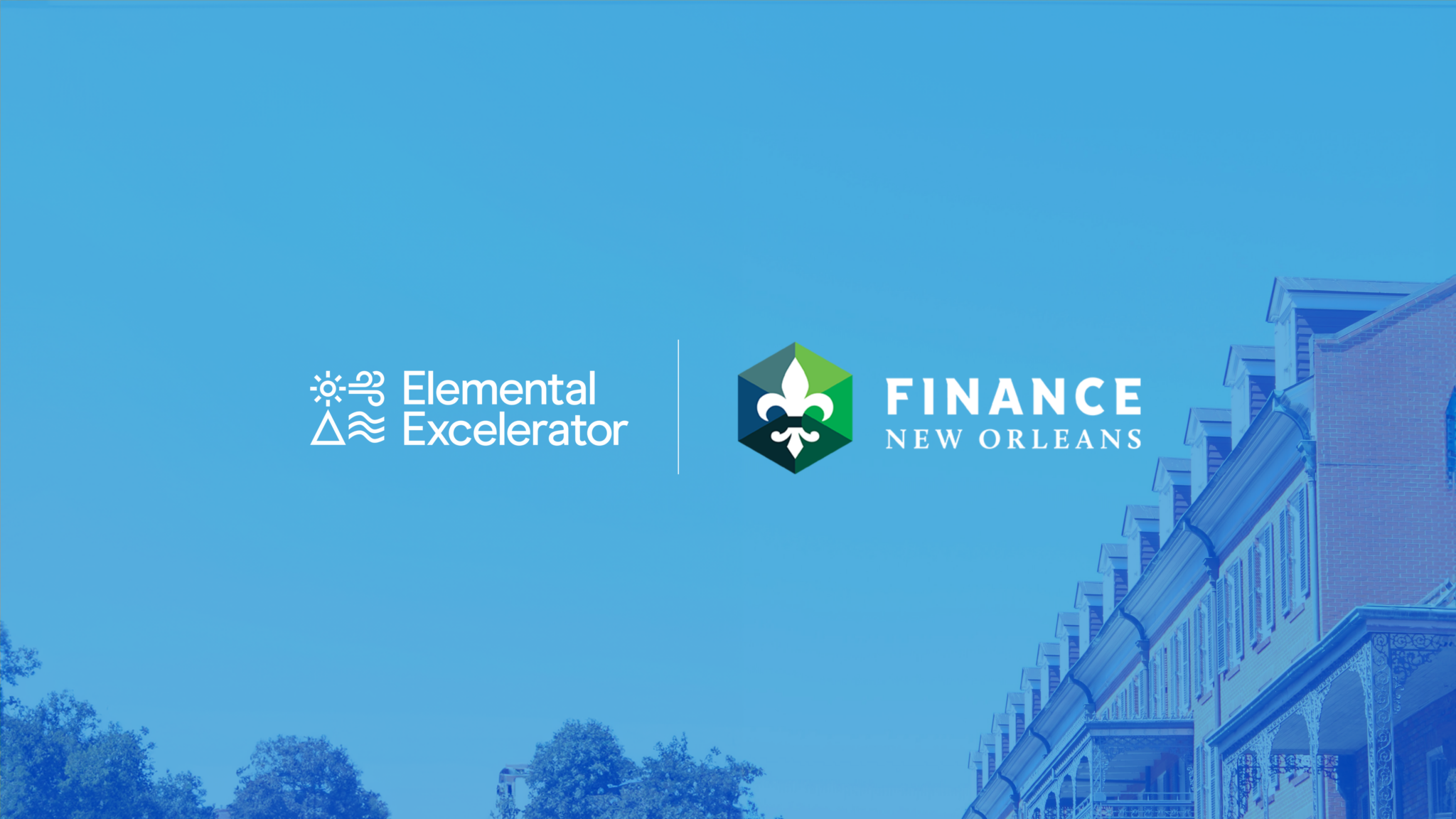
We often think about what we do at Elemental as building a machine for deploying climate technologies. Over the past decade that we’ve been at this work, though, we have learned again and again that innovation is really about people, not just technology. The why behind what people choose to do is the driver of progress. It’s an engine steered by ingenuity, but powered by hearts.
So why do we do what we do? Here, Kim Baker, our Director of Water Innovation, shares what drew her into her work, why Elemental is the right venue for the change she want to see in the world, and what she’s excited to see flourish in 2020. This is the first in a series of profiles that, as we recruit and start to get to know our next cohort of entrepreneurs, we hope will help you get to know us.

What experiences shaped your decision to work on water issues?
During my engineering undergrad, I led a group of fellow students to Niger, Africa through Engineers Without Borders. We partnered with a local NGO to construct a well-water rope-and-washer pump for a remote rural Tuareg village that’s an eight-hour drive into the desert. This well enabled the nomadic students to attend school, and helped the women avoid the grueling several-mile walk to fetch water each day. We slept in tents in the desert — sometime I’ll tell you about almost stepping on a scorpion outside the tent while taking hallucinogenic malaria pills — and worked alongside locals to set up the water pump, which was powered by a camel. Talk about low tech, high impact!

I think about this experience often, and throughout my professional career the common thread has always been water. Water is quite literally the foundation for all life, and my work is inspired by all the ways it can connect people and change lives.
What are you hoping to achieve through your work at Elemental and with our portfolio companies?
I’ve worn many hats during my professional career. Elemental represents the perfect intersection where I can use my entrepreneurial drive to support our portfolio companies, while building momentum in the sector to embrace innovation in a way that works for the industry. And that’s important because at the center of the water and wastewater sector is human health, well-being, and manufacturing products we rely on. The sector is often dubbed slow to innovate or lagging behind the energy sector. In reality, the stakes for changing processes or systems are high!
 Water 2.0, or water management in the next decade, will require us to move from the status quo in order to accommodate everything from a growing population to climate change while also handling emerging contaminants from industrialization and also our drive for consumerism and more stuff. But when the end-product is drinking water and sanitation, which are mass consumed by everyone, how do we innovate without putting human health at risk? At Elemental, we’re looking for ways to make this process easier, faster and more affordable.
Water 2.0, or water management in the next decade, will require us to move from the status quo in order to accommodate everything from a growing population to climate change while also handling emerging contaminants from industrialization and also our drive for consumerism and more stuff. But when the end-product is drinking water and sanitation, which are mass consumed by everyone, how do we innovate without putting human health at risk? At Elemental, we’re looking for ways to make this process easier, faster and more affordable.
What are the three biggest themes you’re seeing in the water sector this year?
- Drips and drops in bits and bytes. The water sector is behind other sectors like power on the digital front. Data is the foundation to become more innovative, but too much of it is sitting in piles of paper on people’s desks waiting to be entered into an antiquated system. That data needs to become more actionable so that it can support decisions, which is at the center of the “digital water” shift taking shape across the industry. If we don’t start by laying a better digital foundation we’ll struggle to implement the tech solutions that can successfully transform our water and wastewater practices — which are largely outdated, extractive, and expensive — to a set of more sustainable and economical water services in the future. But at the moment it’s a challenge for many utilities just to get to a point where new tech is useful.
- Think Lego-like. A decentralized and modular approach in the water sector requires a shift in thinking beyond the water and wastewater treatment plants. But maintaining water quality, availability, and sanitation management beyond the plant must always be considered, especially as we consider how water intersects with other industries. In California, for example, pumping, treating, and heating water consumes an estimated 20% of the state’s electricity. How can we take a different approach, through adapting infrastructure and capital intensive processes, to reduce that energy consumption? Let’s use innovation to allow industrial processors to reuse clean water and handle waste at the source, removing the burden on our centralized systems.
- Old dogs, new tricks. Infrastructure is expensive. Treatment methodologies are expensive. How can we innovate better, faster, and easier without having to re-create the wheel (membrane optimization is a good example). Since the planning and construction phases of implementation are extremely long, we can implement step changes within our existing systems, such as empowering operators and industrial processors with asset management tools to prevent catastrophic failures. This will optimize treatment processes instead of replacing them. We also need to think about how regulations can drive innovation. As industrial processes change and systems age, new water quality concerns will emerge, as we’ve seen micro plastics, pharmaceuticals, or lead leaching into drinking water. In some scenarios, our existing treatment methodologies simply cannot effectively address these new challenges stemming from the emerging contaminants of industrialization and urbanization like polyfluoroalkyl substances (aka PFAS or “forever chemicals”). We must find new solutions.




